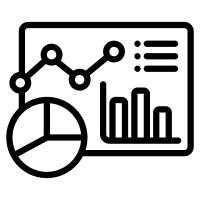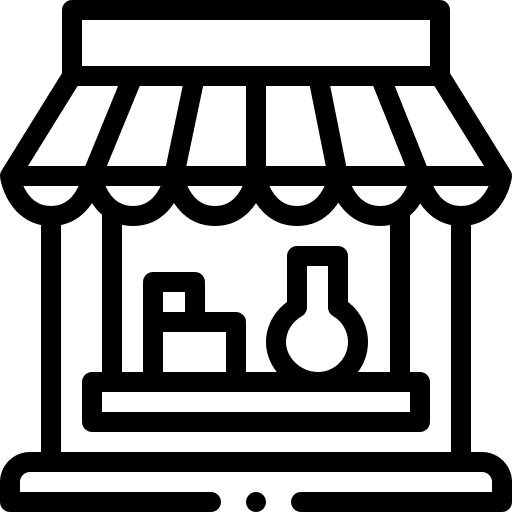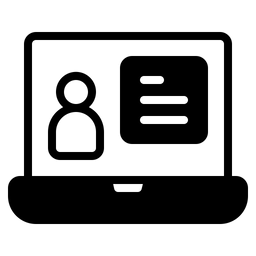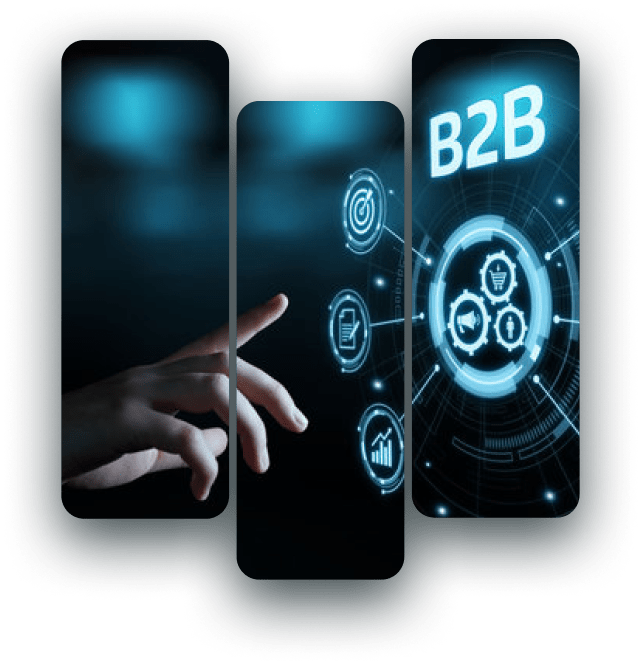See why growth companies choose BluIQ
The Ultimate in Flexibility and Scalability for Subscription Management and Billing.

BluIQ is a configurable platform that bridges the gaps between your CRM, ERP and related business processes.

Customize Your Monetization Platform Quickly and Cost-Effectively.

The Ultimate Flexibility and Scalability to Process Complex Data Staging & Mediation Scenarios with Ease

End-to-end Integration for Seamless Order Activation and Provisioning

BluLogix Chargeback & Cost Recovery for Public Sector and Enterprise Organizations

BluIQ gives you reporting, intelligence and insights in one package.

Empowering Ecommerce, Self-Management, and Seamless Renewals with Channel Support


Lessons, observations and insights for the subscription business

How BluIQ helps our customers’ subscription businesses successfully grow

The latest news and analyst reports on the Software-as-a-Service and Subscription industry

Attend an event near you to connect, learn, and gain inspiration.

The best companies in the world trust BluLogix for all of their billing needs

A collection of recorded webinars and videos on Software-as-a-Service and Subscription Management

Details on BluIQ subscription management and billing platform specifications

Subscription and Software-as-a-Service guides with actionable insights

Why Top Companies Choose BluLogix
Blulogix Whitepaper
In B2B commerce, the shift toward recurring and subscription billing models has been nothing short of transformational. This evolution has enabled businesses to foster closer relationships with their customers, predict revenue streams more accurately, and adapt swiftly to market demands. However, the move to subscription-based services introduces a unique set of challenges, particularly when it comes to billing. Understanding these intricacies is the first step in navigating the complex landscape of B2B subscription management.

The Challenges of B2B Recurring and Subscription Billing
Navigating the Complexity
The key to managing these challenges lies in understanding the unique needs of B2B subscriptions and adopting a billing solution capable of handling this complexity. An effective B2B subscription billing platform must offer:
Setting the Stage
In this guide, we’ll explore specific areas of complexity in B2B subscription billing, from account and product management to global compliance and data mediation. Each section will provide insights and strategies to help businesses navigate these challenges, leveraging the complexities to drive revenue, improve profitability, and enhance customer satisfaction.
Understanding the intricacies of B2B recurring and subscription billing is the foundation upon which businesses can build a robust, efficient, and customer-centric billing strategy. By embracing the complexities, businesses can unlock new opportunities for growth and establish a competitive edge in the ever-evolving B2B landscape.
In the landscape of B2B commerce, billing complexity isn’t just a buzzword—it’s a significant barrier that companies must navigate to ensure success in the subscription economy. But what exactly constitutes this complexity, and why is it so pivotal for businesses to understand and manage it effectively?
The Components of Billing Complexity
Complexity in B2B billing arises from several key factors, each adding layers of intricacy to how companies manage and process subscriptions. Here’s a closer look at these dimensions:
Why Complexity Matters
Understanding and managing the complexity of B2B billing is not merely about keeping the lights on—it’s about unlocking strategic advantages:
Navigating Billing Complexity
The path through the maze of B2B billing complexity begins with a clear understanding of its dimensions and impacts. By recognizing the inherent challenges and strategically addressing them, businesses can transform billing from a potential headache into a powerful tool for customer engagement and revenue generation.
This guide will cover specific strategies and solutions for managing each aspect of billing complexity. From leveraging technology to streamlining processes to adopting best practices for customer engagement, there’s a wealth of tactics available for businesses ready to tackle the challenge head-on and thrive in the subscription economy.
In B2B subscription billing, one of the most formidable challenges businesses face is managing account complexity. Diverse customer accounts, with their unique configurations, organizational hierarchies, and contractual agreements, require a nuanced approach to ensure accurate and efficient billing. We will dig into strategies for effectively navigating the labyrinth of account complexity, ensuring businesses can meet their customers’ needs while maintaining streamlined operations.
Understanding Account Complexity
Account complexity in B2B billing arises from the multifaceted relationships businesses have with their clients. A single client might encompass multiple departments, subsidiaries, or even geographic locations, each with its own set of billing requirements, pricing agreements, and usage patterns. Furthermore, the need to support multiple contacts, billing addresses, and payment methods for a single account adds layers of complexity to the billing process.
Key Strategies for Managing Account Complexity
Embracing the Complexity
Navigating account complexity in B2B subscription billing is not just about managing operational challenges; it’s about creating value for your clients. By implementing these strategies, businesses can not only streamline their billing processes but also enhance their relationships with clients through improved billing accuracy, transparency, and customization.
In B2B subscription models, product complexity presents a significant challenge. With businesses constantly innovating and expanding their offerings, managing a diverse range of products, services, and bundles becomes a pivotal task. This complexity is compounded when these offerings need to be tailored to different customer segments or bundled in various configurations. We will explore strategies for effectively managing product complexity in subscription models, ensuring businesses can offer flexibility and customization without compromising operational efficiency.
The Challenge of Product Complexity
Product complexity in B2B models often manifests in several ways:
Strategies for Managing Product Complexity
Managing product complexity in B2B subscription models demands a strategic approach, focused on centralization, automation, and clarity. By adopting these strategies, businesses can not only streamline their internal processes but also offer the customization and flexibility that B2B clients value. As we continue to explore billing and subscription management complexity, it becomes clear that the right tools and approaches can transform potential challenges into competitive advantages.
In B2B subscriptions, pricing complexity often stands as a formidable barrier to scalability and customer satisfaction. With businesses striving to cater to diverse customer needs while also maintaining competitive edge and profitability, navigating the maze of pricing strategies and tiers becomes critical. It’s critical to understand the challenges of managing multiple pricing models in B2B environments and strategic ways to simplify this complexity.
The Pricing Conundrum
Pricing complexity in B2B subscription models can manifest in several ways:
Strategies for Simplifying Pricing Complexity
Conclusion: Mastering Pricing Complexity
Navigating the complexity of B2B pricing strategies is a delicate balancing act between customization and simplicity. By strategically applying the above practices, businesses can address the inherent challenges of pricing complexity, paving the way for streamlined operations, satisfied customers, and sustained growth. Simplifying pricing complexity not only eases internal processes but also positions your offerings more attractively in the competitive B2B landscape.
As the subscription economy grows, B2B businesses are increasingly adopting usage-based, consumption, and SaaS metering models. These models offer the flexibility and fairness that modern customers demand, billing them based on their actual usage rather than a flat rate. However, implementing these models introduces a new set of challenges, particularly in accurately tracking, metering, and billing for usage.
Understanding Metering Models
Usage-Based Billing: Customers are billed based on the volume of services or resources they consume. This model is common in cloud services, where businesses pay for the computing resources they use.
Consumption Billing: Similar to usage-based billing, but often applied to products that are consumed over time, such as data storage or API calls.
SaaS Metering: Specifically for Software-as-a-Service, where billing might be based on the number of users, features accessed, or data processed.
Navigating Metering Challenges
Strategies for Mastering Metering
Conclusion: Embracing Metering Opportunities
While usage-based, consumption, and SaaS metering models introduce complexities, they also present opportunities for businesses to align more closely with customer needs, offer more competitive pricing, and drive revenue growth. By adopting strategic approaches to metering challenges, businesses can not only navigate these complexities but also leverage them as a competitive advantage in the subscription economy.
In the digital era, the success of B2B subscription models hinges not just on the products or services offered but also on the smooth orchestration of various business systems. Seamless integration across these systems, particularly billing, plays a pivotal role in managing complexity and driving operational efficiency.
The Importance of Seamless Integrations
Integrations in the context of B2B subscription billing extend across CRM (Customer Relationship Management), ERP (Enterprise Resource Planning), provisioning systems, and beyond. These integrations are essential for automating the flow of data, ensuring accuracy, and providing a unified view of customer activities. The benefits are manifold:
Challenges in Achieving Seamless Integrations
Despite the clear benefits, achieving seamless integrations presents several challenges:
Strategies for Streamlining Integrations
Conclusion: The Power of Integration
Streamlined integrations are essential for unlocking the full potential of B2B subscription models. By ensuring that different systems work together harmoniously, businesses can reduce complexity, enhance efficiency, and provide superior customer experiences. As we move forward, the ability to integrate seamlessly will become an increasingly important competitive differentiator in the subscription economy.
In the intricately networked world of B2B subscription services, the ability to accurately and efficiently manage data from multiple sources is not just an operational necessity—it’s a strategic asset. The proliferation of data, from customer interactions to usage metrics, offers a wealth of insights that can drive more accurate billing, enhance customer experiences, and inform strategic decisions.
The Challenge of Multiple Data Sources
The modern B2B subscription model relies on data from an array of sources, including CRM systems, usage tracking tools, customer feedback platforms, and financial reporting software. Each source contributes valuable insights but also adds complexity to data management:
Strategies for Optimizing Data Use
Conclusion: Data as a Strategic Asset
In the subscription business model, effective data management is a cornerstone of success. By harnessing multiple data sources through strategic integration, analytics, and governance, businesses can unlock powerful insights that drive accurate billing, personalized customer experiences, and informed strategic decisions. Optimizing the use of data not only streamlines operations but also provides a competitive edge in the ever-evolving B2B landscape.
In the competitive arena of B2B subscriptions, the quest for operational excellence is unending. A key player in this journey is end-to-end automation—a transformative force that redefines the efficiency and accuracy of subscription management and billing processes.
The Imperative for Automation
In the intricate web of subscription management, numerous processes—from account setup and usage tracking to billing and customer communications—demand precision and timeliness. Manual handling of these tasks is not only resource-intensive but prone to errors, leading to customer dissatisfaction and potential revenue loss. Automation addresses these challenges head-on, offering a pathway to streamlined operations and enhanced service delivery.
Transformative Benefits of Automation
Key Areas for Automation in Subscription Management
Implementing End-to-End Automation
Achieving comprehensive automation requires a strategic approach:
Conclusion: The Automated Future
End-to-end automation in subscription management and billing is not just a futuristic ideal—it’s a practical necessity for businesses aiming to thrive in the B2B subscription landscape. By transforming processes across the board, automation empowers businesses to achieve unprecedented levels of efficiency, accuracy, and customer satisfaction. As we continue to explore the components of successful subscription management, the role of automation as a foundational element becomes ever clearer, promising a streamlined, customer-centric future.
In the intricate ecosystem of B2B subscription management, the ability to accurately mediate and process complex data sets stands as a cornerstone for reliable billing and insightful reporting. Data mediation—the process of transforming raw usage data into a format suitable for billing and analysis—presents a significant challenge, particularly as businesses scale and diversify their offerings.
The Role of Data Mediation in Subscription Billing
Data mediation is critical in scenarios where customer usage varies widely, such as in SaaS platforms, telecommunication services, or any subscription model that incorporates usage-based billing. The process involves collecting data from various sources, normalizing it to ensure consistency, and then correlating it with the correct customer accounts and pricing plans. Effective data mediation enables businesses to:
Challenges in Data Mediation
Businesses face several hurdles in mediating data effectively:
Strategies for Effective Data Mediation
Effective data mediation is crucial for businesses looking to capitalize on the flexibility and customer-centricity of the B2B subscription model. By implementing the strategies outlined above, businesses can ensure that their billing processes are accurate, efficient, and transparent, laying the groundwork for sustained growth and customer satisfaction.
In B2B subscription services, the Configure Price Quote (CPQ) process represents a critical juncture where speed, accuracy, and customer customization intersect. As businesses strive to cater to the increasingly complex demands of their clients, simplifying the CPQ process becomes paramount.
Understanding CPQ Complexity
CPQ complexity in B2B environments often arises from:
The Role of CPQ Tools
CPQ tools are designed to address these challenges head-on, providing a streamlined platform for sales teams to quickly and accurately generate quotes. Key benefits include:
Strategies for Simplifying CPQ Complexity
For B2B subscription services, the ability to quickly generate accurate, customized quotes is a competitive advantage. CPQ tools not only streamline the quoting process but also empower sales teams to respond more effectively to customer needs. By implementing the strategies outlined above, businesses can tackle CPQ complexity, enhancing operational efficiency and driving sales success.
In the landscape of B2B subscription models, the transition from sale to service activation—known as provisioning—is a critical phase that directly impacts customer satisfaction and retention. However, provisioning complexity, driven by the need for customized solutions, integration with existing customer systems, and the sheer variety of subscription options, can pose significant challenges.
The Provisioning Challenge
Provisioning in B2B subscription services involves setting up and configuring the service according to the specific agreement made during the sales process. Challenges arise due to:
Strategies for Streamlining Provisioning
Efficient and effective provisioning is a cornerstone of customer satisfaction in the B2B subscription model. By addressing the challenges of provisioning complexity with strategic planning, automation, and team enablement, businesses can ensure that the transition from sale to service is seamless. This not only enhances the customer experience but also sets the stage for long-term customer relationships and retention.
As the digital economy continues to expand, B2B companies are increasingly offering a variety of digital products and services, necessitating sophisticated strategies for managing digital inventory. Unlike physical inventory, digital inventory—comprising software licenses, cloud services, digital content, and more—presents unique challenges in tracking, billing, and ensuring compliance.
Understanding Digital Inventory Challenges
Digital inventory management goes beyond merely keeping count of items sold or services rendered. It involves:
Best Practices for Managing Digital Inventory
Effective management of digital inventory in the B2B subscription model is critical for maintaining operational efficiency, ensuring customer satisfaction, and achieving compliance. By embracing the complexities of digital inventory and implementing these best practices, businesses can not only overcome the challenges but also leverage their digital offerings as a competitive advantage.
In the competitive landscape of B2B subscriptions, the renewal process is a critical moment of truth. It’s an opportunity to reaffirm value, fortify relationships, and drive predictable revenue. However, navigating this phase with finesse requires a deep understanding of customer needs, strategic engagement, and a seamless operational approach.
The Importance of Customer Renewals:
Renewals are the heartbeat of the subscription model, directly influencing customer lifetime value and long-term company health. They reflect customer satisfaction and the perceived ongoing value of your service. High renewal rates signal strong product-market fit and customer loyalty, while dips can indicate underlying issues with service delivery, customer engagement, or market alignment.
Proactive Engagement for Renewal Success:
Scheduled Check-ins: Implement a calendar of regular touchpoints that increase in frequency as the renewal date approaches. Use these meetings to discuss service performance, upcoming needs, and any adjustments to maximize value.
Early Value Realization: Focus on ensuring that customers recognize the value of your service early and often. Highlight usage statistics, achieved outcomes, and how your service compares to alternatives in terms of ROI.
Customizing the Renewal Offer:
Tailored Renewal Packages: Analyze customer usage and feedback to create personalized renewal offers. Include options for service expansion, feature upgrades, or contract adjustments to better meet evolving business needs.
Incentive Strategies: Consider incentives for early renewal commitments or multi-year contracts. These could range from pricing discounts to access to exclusive features or beta programs.
Simplifying the Renewal Process:
Streamlined Operations: Leverage automation tools to manage renewal notifications, contract updates, and invoicing. Ensure the process is straightforward, with clear steps and support readily available.
Transparent Communications: Create a series of communications leading up to the renewal date, outlining the process, highlighting the value provided, and setting clear expectations for next steps.
Leveraging Data for Renewal Insights:
Performance Analytics: Utilize customer usage data and service performance metrics to guide renewal discussions. Presenting data-driven insights can reinforce the value of your service and help identify areas for potential expansion.
Predictive Modeling: Employ predictive analytics to identify customers at risk of churn or those likely to renew. Tailor engagement strategies based on these insights to proactively address concerns or leverage opportunities.
Building a Culture Focused on Renewals:
Cross-Functional Collaboration: Ensure sales, customer success, and product teams are aligned in their understanding of the renewal process and customer health indicators. Foster a culture where every interaction with the customer is viewed as an opportunity to reinforce the value and deepen the relationship.
Continuous Improvement: Regularly review the renewal process for bottlenecks or areas of friction. Solicit feedback from customers and frontline teams to refine and improve your approach continuously.
The renewal phase in B2B subscriptions is a pivotal opportunity to solidify customer relationships and ensure ongoing revenue streams. By adopting a proactive, customer-centric approach, businesses can navigate renewals with confidence, securing long-term loyalty and sustained growth.
For B2B subscriptions, customer retention is a pivotal factor underpinning the long-term success and sustainability of businesses. Far beyond the initial capture, the art of retaining customers demands a nuanced, ongoing engagement strategy that nurtures and expands the customer relationship over time.
The Essence of Customer Retention:
Retention serves as the bedrock of subscription-based business models, crucial for maintaining a stable revenue stream and fostering organic growth through upsells and cross-sells. It’s a reflection of customer satisfaction and the perceived continuous value of a service. Effective retention strategies mitigate churn, amplify customer lifetime value, and transform satisfied customers into vocal advocates for your brand.
Crafting an Exceptional Onboarding Experience:
Fostering Continuous Engagement and Support:
Establishing Valuable Feedback Loops:
Building a Vibrant Community:
In B2B subscriptions, customer retention is the rhythm that sustains business harmony. By implementing thoughtful onboarding, continuous engagement, actionable feedback mechanisms, and fostering a sense of community, businesses can secure the loyalty and satisfaction of their customers. Retention is not merely about maintaining status quo but nurturing a growth ecosystem where every customer feels valued and understood.
In B2B subscription management, the concept of customer penetration stands as a pivotal strategy for fueling business growth. It’s about broadening the scope of your engagement with existing customers, introducing them to a wider array of your services or premium features. This strategic deep dive explores methods to seamlessly weave your offerings into the very fabric of your customers’ operational workflows, thereby unlocking new levels of mutual growth and satisfaction.
The Significance of Customer Penetration:
Customer penetration is more than just an upsell; it’s about cultivating an ecosystem where your services become indispensable to your customers’ success. By effectively increasing the depth of your service integration, you not only boost your revenue potential but also solidify customer loyalty by becoming a key contributor to their operational efficiency and innovation.
Pathways to Maximize Service Penetration:
The strategy of maximizing customer penetration requires building deeper, more integrated relationships with your B2B subscription customers. By focusing on understanding and aligning with your customers’ broader business goals, and tailoring your services to become a core part of their success, you not only unlock new avenues for growth but also cement your role as a trusted partner. This approach not only drives revenue but also fosters a symbiotic relationship that propels both parties towards achieving their strategic objectives.
In B2B subscriptions, customer success transcends traditional support frameworks, embodying a proactive commitment to guiding customers towards achieving their strategic objectives with your service. Customer Success is geared towards ensuring that the right tools, strategies and approaches can be leveraged to achieve both customer and company objectives.
The Cornerstones of Customer Success:
A meticulously crafted customer success strategy is indispensable in the B2B subscription model, serving not just to retain customers but to actively participate in their journey towards achieving strategic goals. By embedding dedicated teams, success planning, regular reviews, and empowering resources into your customer success framework, you transform your service from a mere tool into a vital contributor to customer achievements.
Navigating the Maze of Customer Success:
Mastering the complexities of customer success in B2B subscriptions demands a multifaceted approach, characterized by tailored engagement, scalable processes, insightful measurement, and cross-functional collaboration. By addressing these complexities head-on, businesses can build a robust customer success framework that not only navigates the intricacies of diverse customer needs but also lays a solid foundation for enduring loyalty and growth. Together, these strategies form a comprehensive roadmap for transforming customer success from a concept into a tangible driver of competitive advantage and customer satisfaction in the B2B subscription landscape.
The financial backbone of B2B subscription models rests on efficiently managing complex processes spanning billing, payments, revenue recognition, and reporting. As businesses strive to adapt to the evolving landscape of subscription services, the intricacy of financial operations increases.
Unraveling Financial Complexity:
Financial operations in the subscription model are fraught with challenges that can impede scalability and operational efficiency. These challenges include managing recurring billing cycles, handling diverse pricing models, ensuring accurate revenue recognition in compliance with accounting standards, and providing transparent financial reporting to stakeholders.
Streamlining Strategies for Financial Operations:
Navigating the complexities of financial processes in B2B subscriptions demands a strategic approach focused on automation, compliance, and customer-centricity. By embracing advanced technologies and streamlined processes, businesses can overcome the challenges of financial management, ensuring not only operational efficiency but also a foundation for sustained growth and customer loyalty.
The Software-as-a-Service (SaaS) model has revolutionized how businesses deploy and consume software, offering scalability, flexibility, and cost-effectiveness. However, with these advantages come unique billing complexities that SaaS providers must navigate to ensure financial health and customer satisfaction.
The SaaS Billing Landscape:
SaaS billing intricacies stem from the very nature of the service delivery model—continuous service provision that demands dynamic, user-centric billing solutions. Key challenges include:
Simplifying SaaS Billing: Strategic Approaches
In the competitive SaaS landscape, effectively managing billing complexities is not just about financial transactions; it’s about enhancing customer relationships and driving business growth. By embracing scalable, flexible billing solutions and prioritizing accuracy and transparency, SaaS providers can navigate the challenges of subscription and usage-based billing, paving the way for sustainable success.
Unified Communications-as-a-Service (UCaaS) has emerged as a cornerstone of modern business communication, offering an integrated suite of services including voice, video, messaging, and collaboration tools. Yet, the very integration that makes UCaaS appealing introduces billing complexities, particularly when it comes to consolidating diverse service usage into a single, coherent bill.
UCaaS Billing Challenges:
Streamlining UCaaS Billing: Strategic Insights
Navigating the billing complexities of UCaaS demands a focused strategy that balances the need for detailed service tracking with the imperative of customer simplicity and regulatory compliance. By adopting advanced billing solutions tailored to the UCaaS market, providers can overcome these challenges, offering transparent, accurate, and compliant billing that supports both operational efficiency and customer satisfaction.
Managed Service Providers (MSPs) operate in an environment characterized by a vast array of IT services and customer-specific agreements. This diversity, while a strength, introduces significant billing complexities ranging from varied service level agreements (SLAs) to customized billing cycles.
MSP Billing Challenges:
Streamlining Strategies for MSP Billing:
MSPs navigating the complexities of billing in a service-diverse environment must prioritize flexibility, transparency, and automation. By implementing sophisticated billing solutions designed to handle the unique challenges of the MSP market, providers can simplify their billing processes, reduce administrative burdens, and build stronger, more transparent relationships with their clients. This strategic approach to billing not only enhances operational efficiency but also positions MSPs for sustainable growth and success in the competitive IT services market.
The Internet of Things (IoT) sector, with its expansive network of interconnected devices, ushers in a new era of digital innovation and complexity, especially in billing. IoT service providers grapple with billing for millions of devices, each potentially generating vast amounts of usage data.
IoT Billing Challenges:
Simplifying IoT Billing: Strategic Framework
The IoT industry’s billing complexities demand a comprehensive and strategic approach that incorporates scalable technology, advanced data processing, and a focus on customer experience. By adopting billing solutions designed to address the unique needs of IoT deployments, providers can navigate the challenges of billing at scale, support dynamic business models, and offer clear, user-friendly billing processes. This strategic investment in billing infrastructure is crucial for IoT providers aiming to capitalize on the growth opportunities within this rapidly evolving digital landscape.
In the intricate world of B2B subscription management and billing, complexity often appears as a formidable challenge. From handling diverse customer accounts and product offerings to navigating the nuances of pricing strategies and compliance regulations, businesses face a myriad of complexities. However, within these challenges lies a hidden reservoir of opportunity.
Embracing Complexity as an Opportunity
Complexity in billing and subscription management is not just a hurdle to overcome; it’s a chance to differentiate, innovate, and enhance value propositions. Understanding and mastering these complexities allows businesses to:
Strategies for Turning Complexity into Advantage
Complexity in billing and subscription management should not be viewed merely as an obstacle but as an opportunity for differentiation and growth. By embracing complexity, leveraging technology, enhancing customer experience, and driving innovation, businesses can transform billing challenges into strategic advantages. This approach not only positions companies to better meet the current needs of their customers but also equips them to adapt and thrive in the ever-evolving B2B landscape.
The evolution of B2B subscription models has introduced unprecedented flexibility and opportunities for businesses across various sectors. However, this evolution comes with its own set of challenges, primarily how to manage the complexities inherent in subscription management and billing effectively. From navigating account hierarchies and product configurations to handling intricate pricing models and regulatory compliance, the path is fraught with potential pitfalls that can impede business growth and customer satisfaction.
This paper aims to demystify these complexities, offering actionable insights and strategies to help businesses streamline their subscription management and billing processes. By focusing on critical areas such as unified catalogs, customer policies, and end-to-end automation, the series provides a holistic approach to overcoming common challenges and unlocking the full potential of subscription models.
The Solution to Subscription Complexity
The complexities of B2B subscription management and billing, while daunting, are not insurmountable. Through strategic planning, leveraging the right technologies, and focusing on customer-centric solutions, businesses can navigate these challenges successfully. This guide aims to provide a roadmap that will guide businesses through the intricacies of subscription management, enabling them to streamline operations, enhance customer satisfaction, and achieve sustainable growth in the dynamic subscription economy.
In B2B subscription management and billing, the creation of a unified catalog stands out as a pivotal strategy. This centralized repository of all products, services, and pricing policies not only simplifies the sales and billing process but also ensures consistency, accuracy, and clarity across the organization.
The Role of a Unified Catalog in Simplifying Complexity
A unified catalog serves as the cornerstone for managing subscription and billing complexities, offering a single source of truth for the entire organization. It encompasses all product and service offerings along with associated pricing models, discount policies, and bundle options, streamlining operations and enhancing customer experience.
Advantages of Implementing a Unified Catalog
Key Components of a Unified Catalog
Steps to Building a Unified Catalog
Enhancing the Catalog with Automation and Integration
Leveraging automation in maintaining the unified catalog can significantly reduce manual errors and operational inefficiencies. Integration with CRM, ERP, and billing systems ensures that any changes in the catalog are automatically reflected across the organization, maintaining consistency and accuracy.
The creation of a unified catalog is more than an operational necessity; it’s a strategic asset that can differentiate a subscription business in a competitive market. By centralizing and standardizing product, service, and pricing information, companies can enhance operational efficiency, improve customer satisfaction, and gain the agility needed to thrive in the dynamic subscription economy. As businesses continue to navigate the complexities of subscription management, the unified catalog will remain a critical tool in achieving long-term success and customer loyalty.
In the complex ecosystem of B2B subscriptions, managing customer relationships efficiently is paramount. A strategic approach to customer policy and hierarchy not only simplifies internal processes but also enhances the customer experience.
The Pillars of Effective Customer Management
Unified Customer View: Central to streamlined customer management is the creation of a unified view of each customer within your CRM system. This comprehensive perspective includes all interactions, transactions, and customer-specific nuances, enabling personalized engagement and proactive service delivery.
Global Customer Policy: A well-defined global customer policy serves as the backbone for consistent customer management across the organization. It outlines standard procedures for customer data handling, account modifications, and escalation protocols, ensuring uniformity in customer interactions.
Structured Hierarchy: Implementing a structured n-tier customer hierarchy within your CRM tool allows for the efficient organization of customer accounts, especially for businesses dealing with complex accounts that include multiple departments, subsidiaries, or geographical locations.
Benefits of Streamlining Customer Policy and Hierarchy
Implementing a Global Customer Management Policy
Establishing a robust customer policy and structured hierarchy is not just about managing data or transactions; it’s about creating a foundation for meaningful customer relationships and seamless service delivery. By aligning your customer management strategy with your CRM tool’s capabilities, you can achieve a harmonious balance between operational efficiency and exceptional customer experience. As businesses continue to navigate the complexities of subscription management, prioritizing streamlined customer management will be key to sustainable growth and customer satisfaction.
In the fast-paced world of B2B subscriptions, where customized offerings and rapid service delivery are the norms, traditional quoting processes often fall short. Manual quoting and reliance on spreadsheets not only slow down the sales cycle but also introduce a high potential for errors, affecting accuracy and customer trust. Enter Configure, Price, Quote (CPQ) tools, a game-changer for businesses looking to streamline their quoting and order management processes.
The Drawbacks of Manual Quoting
Manual quoting processes and spreadsheet-based systems, while familiar, come with significant limitations:
Embracing Efficiency with CPQ Tools
CPQ tools are designed to address these challenges head-on, offering a systematic approach to quoting that benefits both the sales team and the customer:
Transforming Sales Operations
The implementation of CPQ tools transforms sales operations in several key ways:
The transition to Configure, Price, Quote (CPQ) tools represents a significant leap forward for businesses looking to optimize their quoting and order management processes. By eliminating the inefficiencies and inaccuracies of manual quoting, CPQ tools not only streamline sales operations but also enhance customer satisfaction through quick, reliable, and transparent quoting. In the competitive landscape of B2B subscriptions, harnessing the power of CPQ tools can be a key differentiator, enabling businesses to close deals faster, scale efficiently, and ultimately drive revenue growth.
In the competitive landscape of subscription-based services, the ability to quickly and efficiently activate and provision services for customers stands as a critical differentiator. This operational necessity not only affects the customer’s first impression but also their ongoing satisfaction and your company’s ability to scale. The integration of billing systems with third-party platforms plays a pivotal role in this process, ensuring that service activation and provisioning are both seamless and scalable.
Understanding Service Activation and Provisioning
Service activation and provisioning involve setting up and delivering the service to the customer upon subscription. This process can range from granting access to a software platform to configuring and deploying physical devices or network services. The complexity of this process varies significantly based on the type and scope of services offered.
The Challenges
Streamlining with Integration
The integration of billing systems with third-party platforms is the linchpin in automating and optimizing service activation and provisioning. This strategic move offers several benefits:
Strategic Approaches for Effective Activation and Provisioning
Leveraging Technology for Enhanced Efficiency
Technological solutions play a crucial role in enhancing service activation and provisioning. For instance, using cloud-based platforms can facilitate real-time updates across systems, while AI and machine learning algorithms can predict and manage demand spikes, ensuring resources are allocated efficiently.
In today’s fast-paced subscription economy, the efficiency of service activation and provisioning is more than just an operational requirement; it’s a significant component of the customer experience and a driver of business growth. By leveraging integration and automation, businesses can ensure that their service delivery processes are not only efficient and accurate but also scalable. This strategic focus on streamlining service activation and provisioning will not only enhance customer satisfaction but also position your business for sustainable success in the competitive landscape of subscription services.
In the complex world of subscription services, the billing process is often fraught with challenges. From accurately calculating charges for varied subscription models to efficiently generating and delivering invoices, businesses face numerous hurdles that can impact both operational efficiency and customer satisfaction. This is where the power of automation in the charging and billing process becomes apparent, and platforms like BluIQ are leading the charge in transforming billing operations for businesses across the spectrum.
The Complexity of Billing in Subscription Models
Billing in subscription-based services involves more than just sending out periodic invoices. It requires precise calculation of product charges based on usage, subscription tiers, and any additional fees or discounts. This complexity increases with the scale of operations and the diversity of subscription offerings.
The Pitfalls of Manual Billing Processes
Revolutionizing Billing with BluIQ Automation
BluIQ, a sophisticated billing platform designed for the modern subscription economy, addresses these challenges head-on by automating the entire billing process. Here’s how BluIQ transforms billing operations:
Enhancing Customer Experience with Billing Automation
Automating the billing process not only streamlines operations but also significantly enhances the customer experience:
The Strategic Advantage of Automating Billing with BluIQ
By automating the charging and billing process with BluIQ, businesses can achieve:
In the evolving landscape of subscription services, automating the charging and billing process with platforms like BluIQ is no longer a luxury but a necessity. By leveraging BluIQ’s sophisticated automation capabilities, businesses can transform their billing operations, reduce operational complexities, and deliver an unparalleled customer experience. Embracing automation in billing is a strategic step towards ensuring sustainable business growth and customer satisfaction in the competitive subscription economy.
In the world of subscription management, the seamless alignment of financial transactions from the billing system with Enterprise Resource Planning (ERP) systems is paramount. This integration is crucial for achieving accurate financial reporting, streamlining accounting processes, and providing a comprehensive view of the company’s financial health.
The Importance of Integration
Financial transactions are the lifeblood of any business, providing vital information on revenue streams, cash flow, and profitability. In subscription models, where billing can be complex and multifaceted, ensuring that every financial transaction is accurately captured and reflected in the ERP system is essential for:
Challenges of Financial Data Synchronization
Strategies for Effective Integration
Leveraging Technology for Seamless Integration
Advancements in cloud-based technologies and APIs (Application Programming Interfaces) have made it easier than ever to achieve seamless integration between billing platforms and ERP systems. These technologies enable real-time data exchange and synchronization, ensuring that financial transactions are accurately reflected in both systems without the need for manual intervention.
The Benefits of Aligned Financial Transactions
Aligning financial transactions with ERP systems brings numerous benefits to subscription-based businesses, including:
For subscription-based businesses, the alignment of financial transactions with ERP systems is not just an operational necessity but a strategic advantage. Automating this integration can significantly enhance financial visibility, accuracy, and efficiency, providing a solid foundation for strategic decision-making and growth. As the subscription economy continues to evolve, the ability to seamlessly sync financial transactions with ERP systems will remain a critical component of successful financial management.
In the world of subscription management, the seamless alignment of financial transactions from the billing system with Enterprise Resource Planning (ERP) systems is paramount. This integration is crucial for achieving accurate financial reporting, streamlining accounting processes, and providing a comprehensive view of the company’s financial health.
The Importance of Integration
Financial transactions are the lifeblood of any business, providing vital information on revenue streams, cash flow, and profitability. In subscription models, where billing can be complex and multifaceted, ensuring that every financial transaction is accurately captured and reflected in the ERP system is essential for:
Challenges of Financial Data Synchronization
Strategies for Effective Integration
Leveraging Technology for Seamless Integration
Advancements in cloud-based technologies and APIs (Application Programming Interfaces) have made it easier than ever to achieve seamless integration between billing platforms and ERP systems. These technologies enable real-time data exchange and synchronization, ensuring that financial transactions are accurately reflected in both systems without the need for manual intervention.
The Benefits of Aligned Financial Transactions
Aligning financial transactions with ERP systems brings numerous benefits to subscription-based businesses, including:
For subscription-based businesses, the alignment of financial transactions with ERP systems is not just an operational necessity but a strategic advantage. Automating this integration can significantly enhance financial visibility, accuracy, and efficiency, providing a solid foundation for strategic decision-making and growth. As the subscription economy continues to evolve, the ability to seamlessly sync financial transactions with ERP systems will remain a critical component of successful financial management.
In the rapidly evolving subscription economy, the ability to scale operations efficiently while maintaining or improving gross margins is crucial for long-term success. Key to achieving this scalability is the seamless integration between various business platforms and the automation of critical billing processes.
The Role of Integration in Business Scalability
As businesses grow, the complexity of operations tends to increase. New product lines, expanded service offerings, and entering new markets introduce complexities that can quickly become overwhelming without the right infrastructure in place. Here, the integration of various platforms — from CRM and ERP systems to billing and customer service platforms — plays a pivotal role. Integration ensures that data flows seamlessly across all business functions, providing a single source of truth and eliminating silos that can hinder efficiency and transparency.
Automating Billing Processes for Efficiency and Accuracy
Manual billing processes are not only resource-intensive but also prone to errors, which can lead to billing discrepancies, customer disputes, and revenue leakage. Automation of billing processes addresses these challenges head-on, offering numerous benefits:
Implementing Integration and Automation
Implementing effective integration and automation requires a strategic approach:
Integration and automation are not just about improving operational efficiency; they are strategic imperatives for businesses aiming to scale in the subscription economy. By ensuring seamless data flow between platforms and automating critical billing processes, businesses can enhance their operational efficiency, improve their bottom line, and deliver a superior customer experience. As the subscription market continues to grow, the ability to scale efficiently while maintaining or improving gross margins will be a key differentiator for successful businesses.
In the rapidly evolving subscription economy, the ability to scale operations efficiently while maintaining or improving gross margins is crucial for long-term success. Key to achieving this scalability is the seamless integration between various business platforms and the automation of critical billing processes.
The Role of Integration in Business Scalability
As businesses grow, the complexity of operations tends to increase. New product lines, expanded service offerings, and entering new markets introduce complexities that can quickly become overwhelming without the right infrastructure in place. Here, the integration of various platforms — from CRM and ERP systems to billing and customer service platforms — plays a pivotal role. Integration ensures that data flows seamlessly across all business functions, providing a single source of truth and eliminating silos that can hinder efficiency and transparency.
Automating Billing Processes for Efficiency and Accuracy
Manual billing processes are not only resource-intensive but also prone to errors, which can lead to billing discrepancies, customer disputes, and revenue leakage. Automation of billing processes addresses these challenges head-on, offering numerous benefits:
Implementing Integration and Automation
Implementing effective integration and automation requires a strategic approach:
Integration and automation are not just about improving operational efficiency; they are strategic imperatives for businesses aiming to scale in the subscription economy. By ensuring seamless data flow between platforms and automating critical billing processes, businesses can enhance their operational efficiency, improve their bottom line, and deliver a superior customer experience. As the subscription market continues to grow, the ability to scale efficiently while maintaining or improving gross margins will be a key differentiator for successful businesses.
In the dynamic landscape of B2B subscription models, channel business management emerges as a pivotal strategy for expanding market reach and enhancing product distribution. Working effectively with resellers or agents requires a structured approach to manage these vital relationships productively.
Understanding Channel Business Management
Channel business management involves the strategic orchestration of partnerships with third parties (resellers, agents, distributors) to market and sell your products or services. These partnerships can extend your market presence, leverage local expertise, and provide customers with value-added services. However, managing these relationships demands careful planning, transparency, and mutual benefit to ensure long-term success.
Establishing Effective Channel Management Processes
Leveraging Technology for Channel Management
Technology plays a crucial role in streamlining channel management processes. Consider leveraging a Partner Relationship Management (PRM) system that offers features such as:
Mastering channel business management is a strategic imperative for subscription-based businesses looking to scale. By establishing clear processes, selecting the right partners, and leveraging technology, companies can build productive, mutually beneficial relationships with their resellers or agents. Effective channel management not only expands your market reach but also enhances your brand’s reputation, ultimately driving growth and success in the competitive B2B landscape.
In subscription-based business models, particularly those operating within the digital space, managing digital inventory emerges as a critical yet complex task. Unlike physical inventory, digital products and services don’t occupy physical space, yet they require meticulous tracking, billing, and reconciliation to ensure business efficiency and customer satisfaction.
Understanding Digital Inventory Complexity
Digital inventory encompasses a wide array of products and services, from software and cloud storage to digital media and online subscriptions. The intangible nature of these assets introduces unique challenges:
Strategies for Efficient Digital Inventory Management
Managing digital inventory effectively requires a multifaceted approach, combining technological solutions with strategic processes.
Leveraging Data for Strategic Advantage
Data analytics plays a crucial role in digital inventory management, offering valuable insights into customer behavior, product performance, and market trends. By analyzing this data, businesses can:
Navigating the complex world of digital inventory requires a strategic blend of technology, processes, and data analytics. By implementing integrated management systems, automating tracking and billing, and leveraging data for insights, subscription-based businesses can efficiently manage their digital assets. This not only streamlines operations but also enhances the customer experience, ultimately driving growth and success in the digital subscription landscape.
As we conclude our comprehensive series on navigating the complexities of B2B subscription management and billing, it’s crucial to recognize that within these challenges lie vast opportunities for growth, innovation, and competitive differentiation. The intricate nature of subscription models can indeed be a formidable maze, but with the right strategies, businesses can turn these complexities into substantial advantages.
Embracing Complexity as a Competitive Edge
The first step in capitalizing on subscription complexity is embracing it as an integral part of your business model. Complexity, after all, is indicative of a highly customizable and flexible service offering that caters to diverse customer needs. By viewing these intricacies not as hurdles but as opportunities, businesses can:
Strategic Insights Through Data Analysis
Complex subscription models generate vast amounts of data, from customer usage patterns to billing preferences. By harnessing this data through advanced analytics, businesses can gain invaluable insights that inform strategic decisions:
Optimized Processes Through Automation and Integration
At the heart of managing subscription complexity efficiently lies the adoption of automated processes and integrated systems. Automation not only streamlines operations but also ensures accuracy and consistency in billing and customer management. Integration across CRM, ERP, and billing platforms provides a unified view of customer interactions, enabling a more cohesive and personalized customer experience.
The journey through the complexities of subscription billing ends not with a simplification of the model but with the mastery of its intricacies. By strategically embracing, analyzing, and optimizing the complexities inherent in subscription models, businesses can unlock new avenues for growth, innovation, and customer engagement. The challenges of managing diverse pricing models, product offerings, and customer preferences, when approached with the right tools and mindset, transform into opportunities to drive revenue, profitability, and satisfaction.
As the subscription economy continues to evolve, let the insights and strategies explored in this series guide your business in leveraging complexity not as a barrier but as a catalyst for success. Remember, in the world of subscription billing, complexity is not the enemy—it’s the blueprint for differentiation and growth.
We’ll go over your business case and customize a platform overview tailored specific to your requirements and needs.

President, Allnet Air Inc. - Telecommunications
Best Outsourced Billing for Mobility

Manager, Cloud Billing - Computer Software
BluLogix has been a great partner.
“Over the last several years, I have seen continual enhancements and additions to the platform. BluLogix has created a comprehensive solution for users. They provide great communication regarding upgrades and address concerns thoroughly and timely.”

Marketing, Graphic Design & Social Media Management - Marketing and Advertising
Fantastic platform. Recommend!
| Cookie | Duration | Description |
|---|---|---|
| cookielawinfo-checbox-analytics | 11 months | This cookie is set by GDPR Cookie Consent plugin. The cookie is used to store the user consent for the cookies in the category "Analytics". |
| cookielawinfo-checbox-functional | 11 months | The cookie is set by GDPR cookie consent to record the user consent for the cookies in the category "Functional". |
| cookielawinfo-checbox-others | 11 months | This cookie is set by GDPR Cookie Consent plugin. The cookie is used to store the user consent for the cookies in the category "Other. |
| cookielawinfo-checkbox-necessary | 11 months | This cookie is set by GDPR Cookie Consent plugin. The cookies is used to store the user consent for the cookies in the category "Necessary". |
| cookielawinfo-checkbox-performance | 11 months | This cookie is set by GDPR Cookie Consent plugin. The cookie is used to store the user consent for the cookies in the category "Performance". |
| viewed_cookie_policy | 11 months | The cookie is set by the GDPR Cookie Consent plugin and is used to store whether or not user has consented to the use of cookies. It does not store any personal data. |
The Ultimate in Flexibility and Scalability for Subscription Management and Billing.
